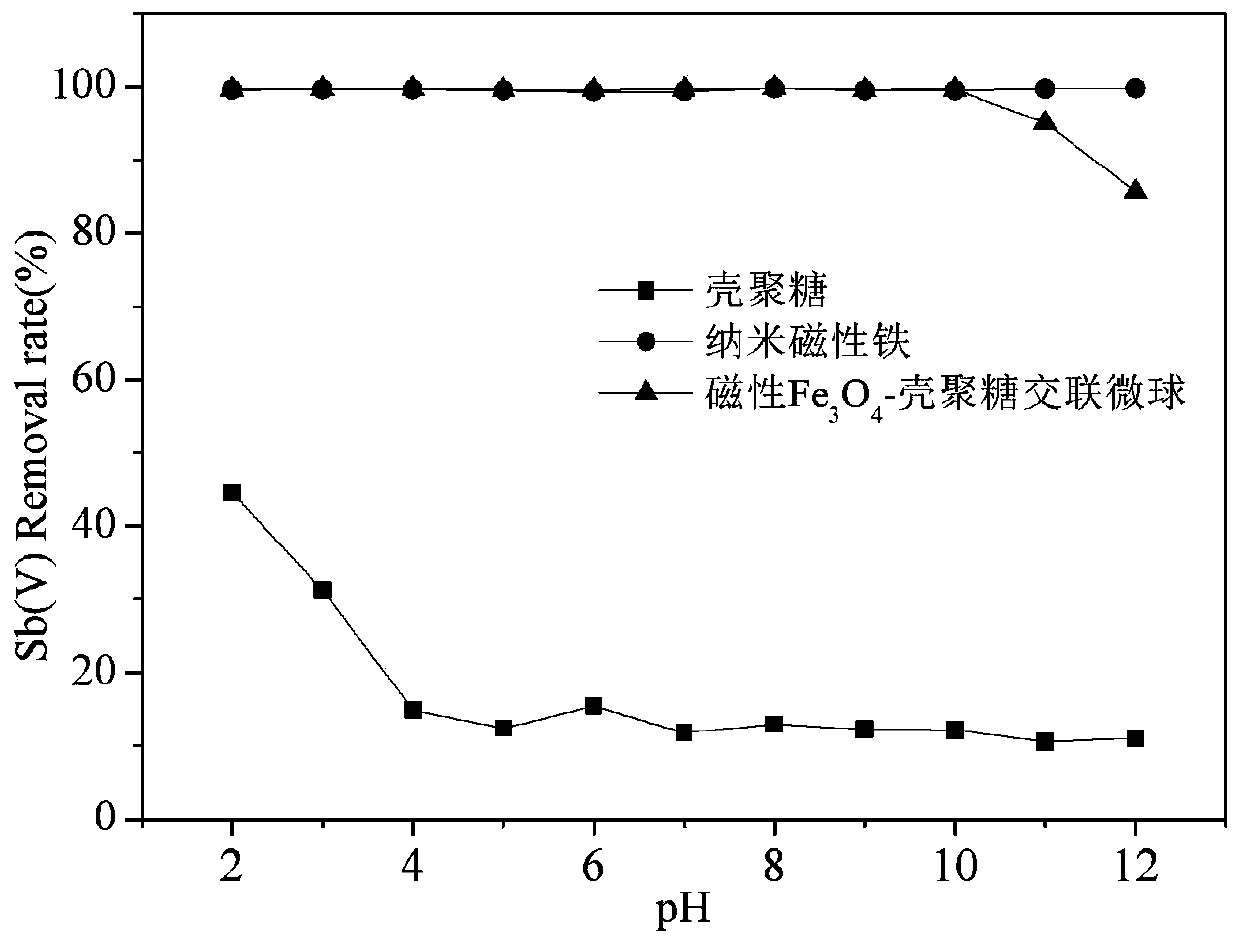Preparation and application of nano mesoporous Fe3O4-chitosan core-shell crosslinked microsphere material
A technology of chitosan core-shell and cross-linked microspheres, applied in other chemical processes, chemical instruments and methods, water/sludge/sewage treatment, etc., can solve problems such as dissolution, difficult separation, and loss of adsorption materials, and achieve The operating conditions are easy to control, the particle size is small, and the effect of high dispersion
- Summary
- Abstract
- Description
- Claims
- Application Information
AI Technical Summary
Problems solved by technology
Method used
Image
Examples
Embodiment 1
[0032] Implementation Example 1: Synthesis of magnetic iron.
[0033] 0.488g FeCl 3 Mix well with 1.5g sodium citrate and dissolve in 100mL ethylene glycol. Then add 6.0g of sodium acetate and stir for 30min, transfer the mixture into a 100mL autoclave lined with polytetrafluoroethylene anti-corrosion material, seal, heat to 200 ℃, and maintain the reaction for 10h; after the reaction, cool to room temperature and collect with a magnet black Fe 3 O 4 Powder, rinse with ethanol and deionized water successively. The obtained nano Fe 3 O 4 SEM and TEM analysis of powder such as figure 2 shown in Figures A1 and A2.
Embodiment 2
[0034] Example 2: Synthesis of mesoporous nanomagnetic iron.
[0035] Mix 1.5g of chitosan solution with ethanol, and then add 0.488g of FeCl 3 Add to the mixed solution, ultrasonically disperse for 15 min, add sodium acetate, stir evenly to form a uniform mixed solution; transfer the above mixed solution into a high-pressure hydrothermal reactor, and carry out a high solvothermal reaction at a temperature of 190-200 °C. After the reaction is completed, the temperature in the kettle is cooled to room temperature by circulating cooling water, and the solid black product in the mixed solution is collected with magnetic iron, washed with ethylene glycol, and dried to obtain mesoporous Fe. 3 O 4 Microspheres; obtained nano Fe 3 O 4 SEM and TEM analysis of powders such as figure 2 shown in Figures B1 and B2.
Embodiment 3
[0036] Example 3: Synthesis of mesoporous magnetic iron.
[0037] Dissolve 0.5g of chitosan in 20mL of 3% acetic acid mixture, and dissolve 0.2g of nano-Fe 3 O 4 Add the mixed solution of chitosan and acetic acid and stir evenly; ultrasonically disperse the mixed solution for 15 min, add 1 mL of chlorohydrin cross-linking agent, stir evenly, transfer the mixed solution to a 10 mL glass needle syringe, and drop the mixture into the container at a rate of 1 mL / min. 0.25M (25°C) NaOH solution with constant magnetic stirring at 400rpm until precipitated particles formed. The precipitated particles were left to stand in the NaOH solution for 12 h. The solid-liquid was separated, and the solid was dried overnight in an atmosphere oven at 50°C. The obtained solid powder was washed with 10 mL of 0.1 M HCl for 4 h to remove unreacted chitosan, then washed with deionized water, and dried in vacuum for 2 h to obtain nano-mesoporous Fe. 3 O 4 - Chitosan core-shell cross-linked micros...
PUM
| Property | Measurement | Unit |
|---|---|---|
| particle diameter | aaaaa | aaaaa |
| specific surface area | aaaaa | aaaaa |
| pore size | aaaaa | aaaaa |
Abstract
Description
Claims
Application Information
 Login to View More
Login to View More - R&D
- Intellectual Property
- Life Sciences
- Materials
- Tech Scout
- Unparalleled Data Quality
- Higher Quality Content
- 60% Fewer Hallucinations
Browse by: Latest US Patents, China's latest patents, Technical Efficacy Thesaurus, Application Domain, Technology Topic, Popular Technical Reports.
© 2025 PatSnap. All rights reserved.Legal|Privacy policy|Modern Slavery Act Transparency Statement|Sitemap|About US| Contact US: help@patsnap.com



